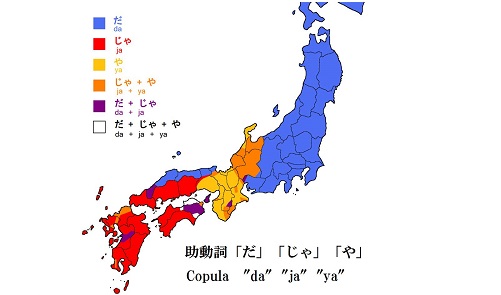Japanese dialects
Japanese dialects. Just like any other languages, there are many dialects in Japan. You might have mastered the standard Japanese, but when you visit other regions, you might be confused at how a language that you know can become so unfamiliar and foreign. This can lead to misunderstanding and troublesome. Therefore, learning Japanese dialects is really important. In this article, Learn Japanese Daily will introduce to you some widely-used Japanese dialects.
Contents
What is a dialect?
Aside from standard Japanese, in every region, we can see the distinctions in its language, such as: vocabulary, grammar, and pronunciation. Dialects can be used in a small or large area. Based on the dialect, we can tell where the person comes from. Let’s hear this dialogue.
アニメの店は どこですか?(Anime no mise wa dokodesu ka?)
Excuse me, can you tell me where the anime store is?
知らん (Shiran)
The word heard might confuse you and make you’d probably wonder what the answer means? Did you hear it right? It’s simply because you have heard the Hakata dialect, a normal way that people from Fukuoka talk and it means “I don’t know”. Let’s learn more about some special dialects in Japan.
7 major Japanese dialects
This article will introduce you to 7 types of Japanese dialects you should know:
博多弁 (Hakata Ben)
Or 福岡弁 (Fukuoka- ben) is used mainly in Fukuoka and its adjacent areas. Let’s take a look at the differences between it and the standard Japanese.
だ、じゃ to become や
For example: 生徒だけど (Seitodakedo) –> 生徒やけど(Seitoyakedo): I’m a student.
赤じゃない(Aka janai) –> 赤やない (Aka ya nai): It isn’t red.
ない to become ん
For example: 知らない (Shiranai) –> 知らん (shiran) (mentioned above) I don’t know.
Or: 食べない (Tabenai) –> 食べん (taben): I don’t eat.
Suffix adjective い to become か
For example: 遅い(osoi) –> 遅か (oso ka): It’s late.
よ to become ばい
For example: それだよ (Soreda yo) –> それやばい(Sore yabai): That’s exactly it.
大阪弁(Ōsaka-ben)
Ōsaka-ben is a part of the Kansai dialect system (関西弁) therefore they are spoken in Kansai areas and almost everyone from these areas understand and use this dialect.
ね to become な
For example: 寒いね (samuine) –> 寒いな (Samui na): Isn’t it cold?
ない to be come へん
For example: 飲まない (nomanai) –> 飲まへん (nomahen): I don’t drink (alcohol).
から to become さかい
For example: 暇だから (Himadakara) –> 暇やさかい (Himayasakai): I’m bored.
Sentence final particle よ to become で, わ
For example: 良かったよ (Yokatta yo) –> 良かったで (yokatta de): It’s so good.
食べたよ (tabeta yo) –> 食べたわ (tabeta wa): I have eaten.
広島弁(Hiroshima ben)
Hiroshima ben is a Japanese dialect from Chugoku. They are recognized easily because:
だ、to become じゃ
For example: 元気だ (genkida) –> 元気じゃ(genki ja): I’m good.
ない to become ん (similar to Hakata ben)
でください to become んさんな
For example: 飲まないでください(Nomanaide kudasai) –> 飲みんさんな (Nomi n-san’na): Please don’t drink (alcohol).
てあげる、であげる to become ちゃる、-じゃる
For example: 教えてあげる (Oshieteageru) –> 教えちゃる (Oshiecha ru): Let me show you.
選んであげる (Erande ageru) –> 選んじゃる (Eranjaru): Let me choose.
京都弁 (Kyoto Ben)
Being a part of the Kansai dialect system as well as Ōsaka-ben, Kyoto Ben was born and developed in Kyoto. They are considered as a gentle, elegant, classic dialect which is associated with the renowned Geisha culture.
We should keep in mind that the current standard Japanese 標準語 (Hyōjun-go) or 共通語 (Kyōtsū-go) is derived from the noble class in Tokyo, in the Meiji era (1868). Before that, Kyoto ben used to be considered as the standard Japanese. So, what are the differences between Kyoto ben and Kyōtsū-go?
よ (at the end) to become え
For example: こちらですよ (Kochiradesu yo) –> こちらどすえ(Kochiradosu e): It’s here.
ね (at the end) to become な
For example: そうですね (Sōdesune) –> そうどすな (Sōdosu na): That’s right.
です、でして to become どす、どした
For example: どうでした (Dōdeshita) –> どうどした (Dōdoshita) : How is this?
ありません to become おへん
For example: 地図はありません (Chizu wa arimasen) –> 地図はおへん (Chizu wa ohen): There is no map.
Please view next page


